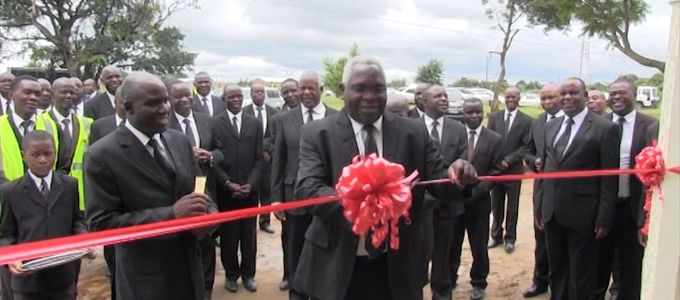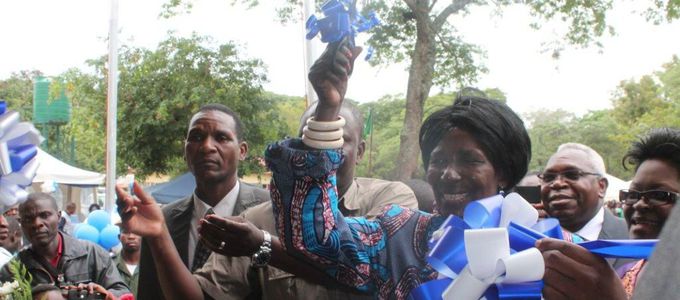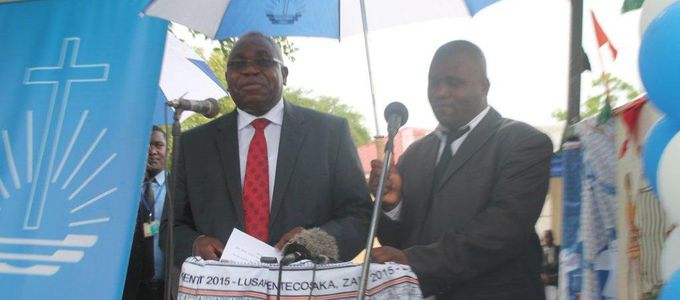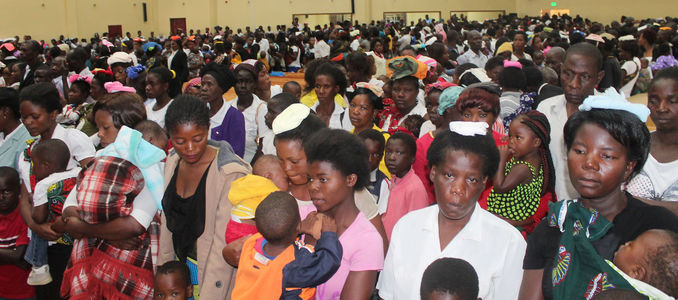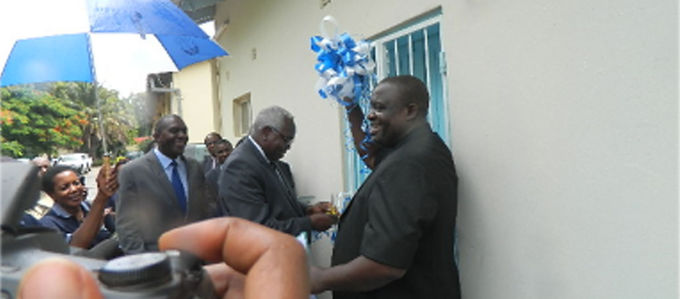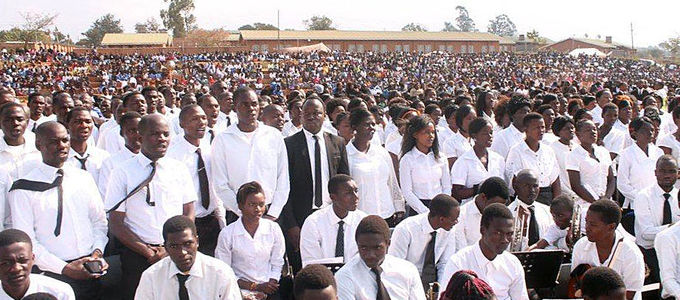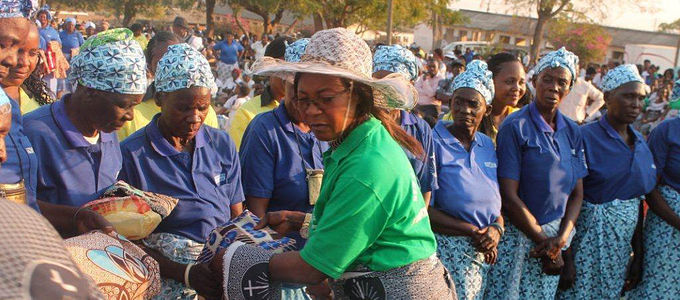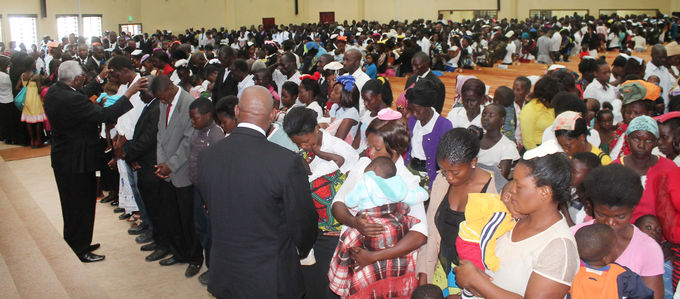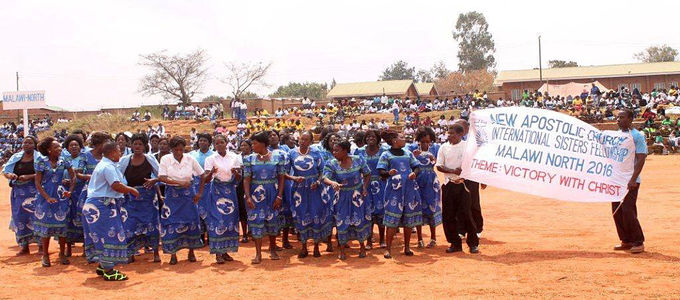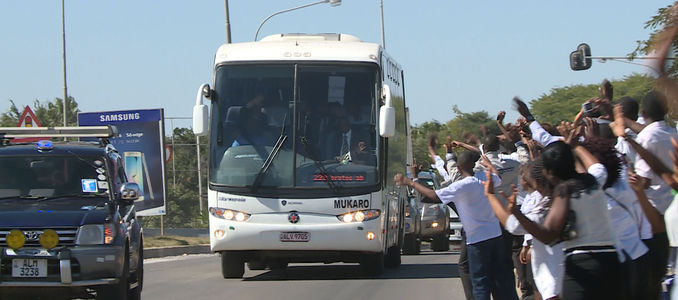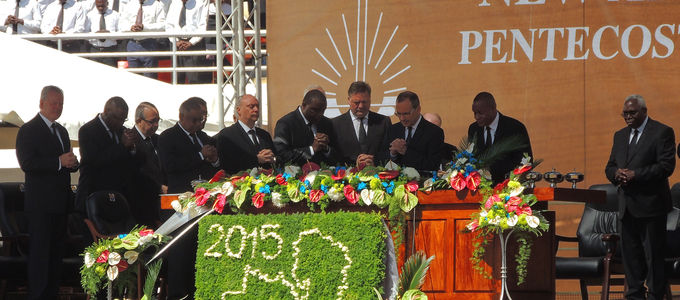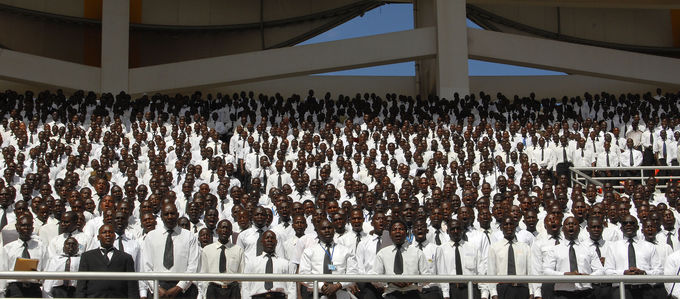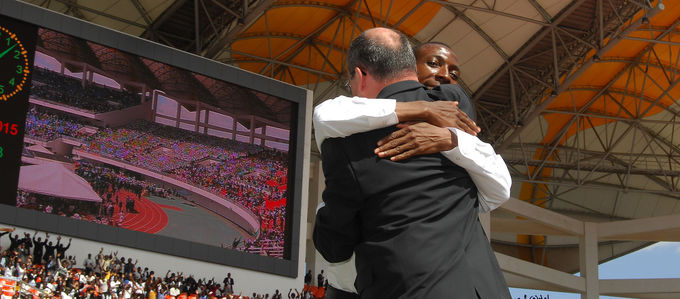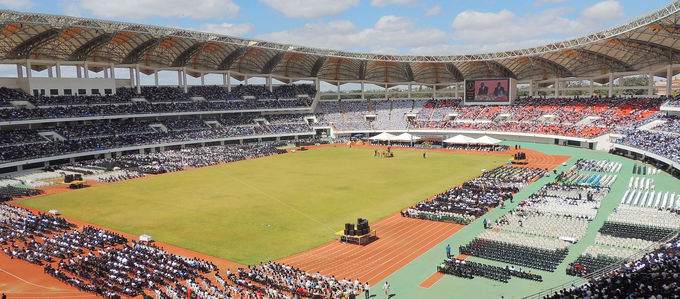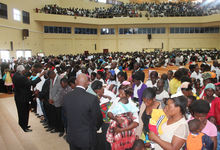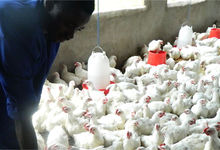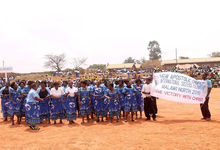Ninetieth anniversary celebrations in Zambia
The name of the city the Chief Apostle will visit this coming Sunday is Livingstone: the cradle of the New Apostolic Church in Zambia. It was here, ninety years ago, that the Church was established. Following is the story of a District Church with a fascinating history.
Mosi-oa-Tunya, the smoke that thunders, is how the locals refer to the Victoria Falls, located on the border between Zambia and Zimbabwe. The David Livingstone was the name of the Scottish explorer and missionary who was the first European to discover this spectacular waterfall, and who named it after his Queen Victoria. A nearby settlement was named after David Livingstone. Livingstone was the capital of Northern Rhodesia from 1907 to 1935, modern Zambia.
In this time, we are talking about the year 1928, a New Apostolic Deacon settled in Livingstone. George Mkandawire, born in Malawi around the year 1900, as a young student took on the name of his teacher: Henwood. When the man moved to South Africa, George joined his mentor and went to South Africa with him. He not only met his future wife there, but also became acquainted with the Church.
A home-grown talent
As soon as he was called to be a Priest, George Henwood Mkandawire began to baptise people and laid the foundation for the first congregations: the first one was in Livingstone (also called Maramba) and in today’s national capital Lusaka. The doctrine spread. In 1954 George Henwood Mkandawire was ordained as an Apostle: the first black Apostle in the history of the New Apostolic Church.
On Christmas Day 1955, Apostle Henwood sealed an 18-year-old man, who would still make a name for himself: Duncan Burton Mfune. He was ordained as a District Apostle in 1988, the first black District Apostle and Church leader. He would give the development of the Church in Zambia a big boost.
When he took office, there were about half a million New Apostolic Christians. By the time he retired, this number had more than doubled. Today the District Church, which includes Malawi and Zimbabwe, has about 1.4 million members. These numbers are only topped by the Democratic Republic of the Congo.
Women move the Church forward
Zambia is an agile District Church. It runs its own charity, the New Apostolic Church Relief Organisation, which builds and supports schools and medical stations. That one of these was inaugurated by the Zambian Vice President and feminist, Mrs Inonge Wina, is not a coincidence. Women play a key role in the development of the Church.
This can best be seen at the International Sisters’ Fellowship. Thousands of women from Zambia, Malawi, and Zimbabwe usually participate. In addition to a presentation on the Catechism, the programme in 2016, for example, also covered health issues and women’s rights. The women also use these gatherings to follow a long tradition of humanitarian work and visit the sick, vulnerable, and needy in the town where the event takes place. There is also time to mix and mingle and sing and dance, of course.
The work undertaken by women plays such an important role in the District Church that guidelines were published in 2011 in support of this noble cause. The paper provides that—from the congregational level to the elder and apostle area level—committees are formed to co-ordinate the work.
Divine services on public television
On the media front, the District Church is also very active. For a number of years now, the Church has repeatedly worked with the national broadcaster ZNBC, for example, to air the annual central Pentecost service. In fact, the New Apostolic Church Zambia has been filling a regular slot on a channel that broadcasts Christian content.
Since October last year, the New Apostolic Church Zambia has been airing two hours of content and regularly broadcasts music videos, clips of divine services, documentaries—for example, pastoral trips by the District Apostle—or recorded Bible study discussions.
The divine service which Chief Apostle Jean-Luc Schneider will conduct this coming Sunday, 29 April 2018, will be broadcast live on ZNBC TV1 as well as on Radio 2. Some 14,000 people are expected to attend the open-air service in person, which will take place in our Nakatindi congregation in Livingstone.
Article info
Author:
Date:
Keywords:
Andreas Rother
26.04.2018
Zambia,
journeys of Chief Apostle,
People/Personalities


